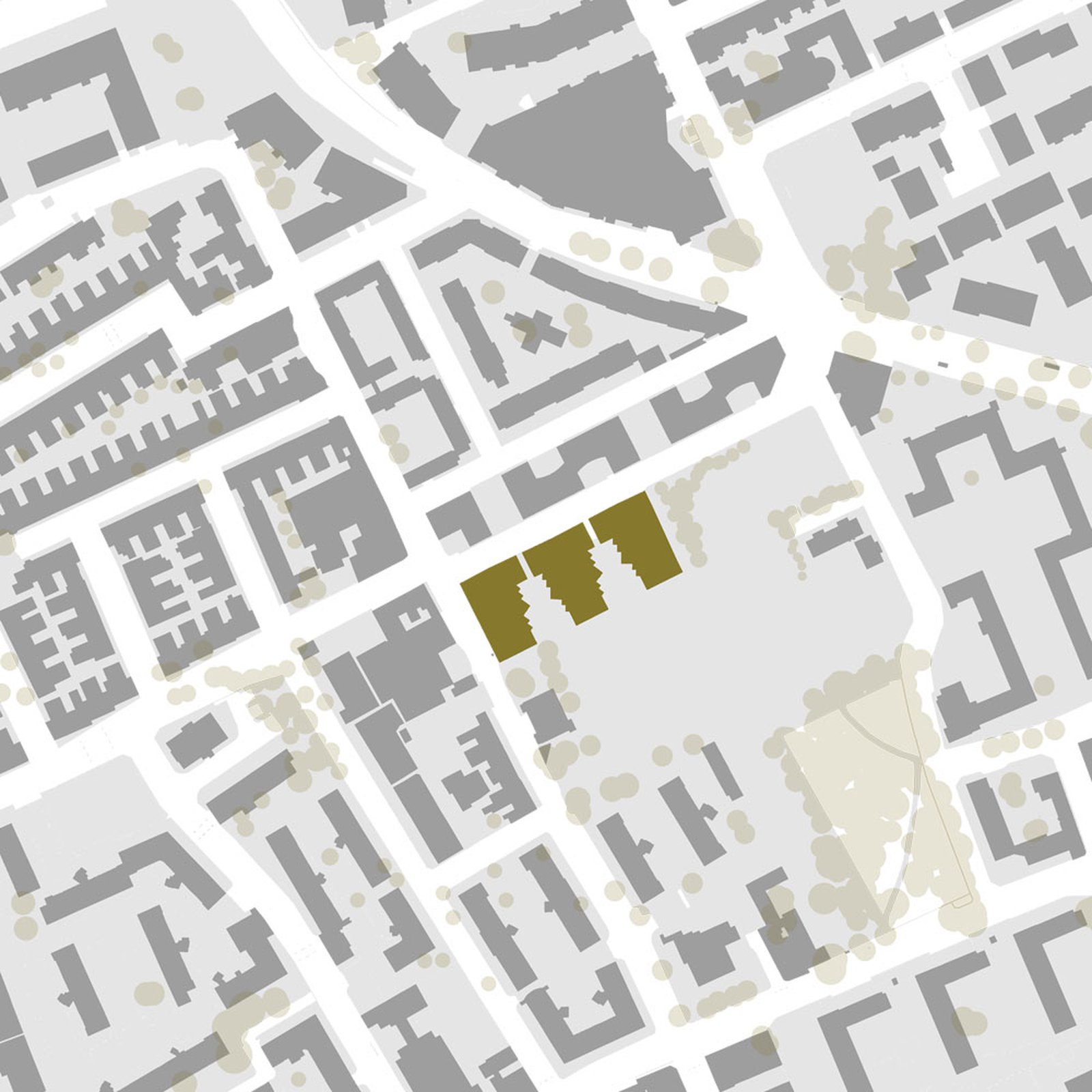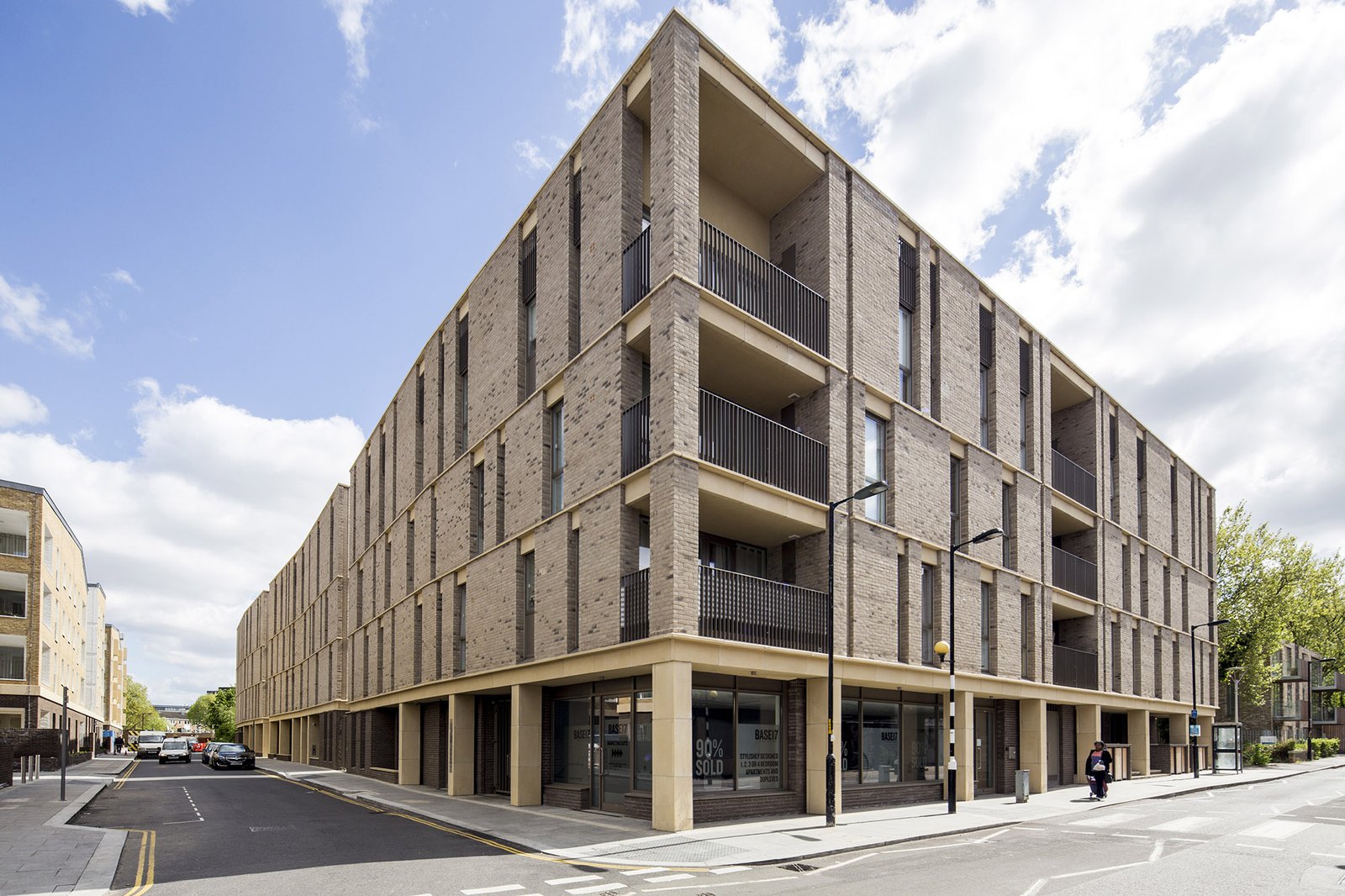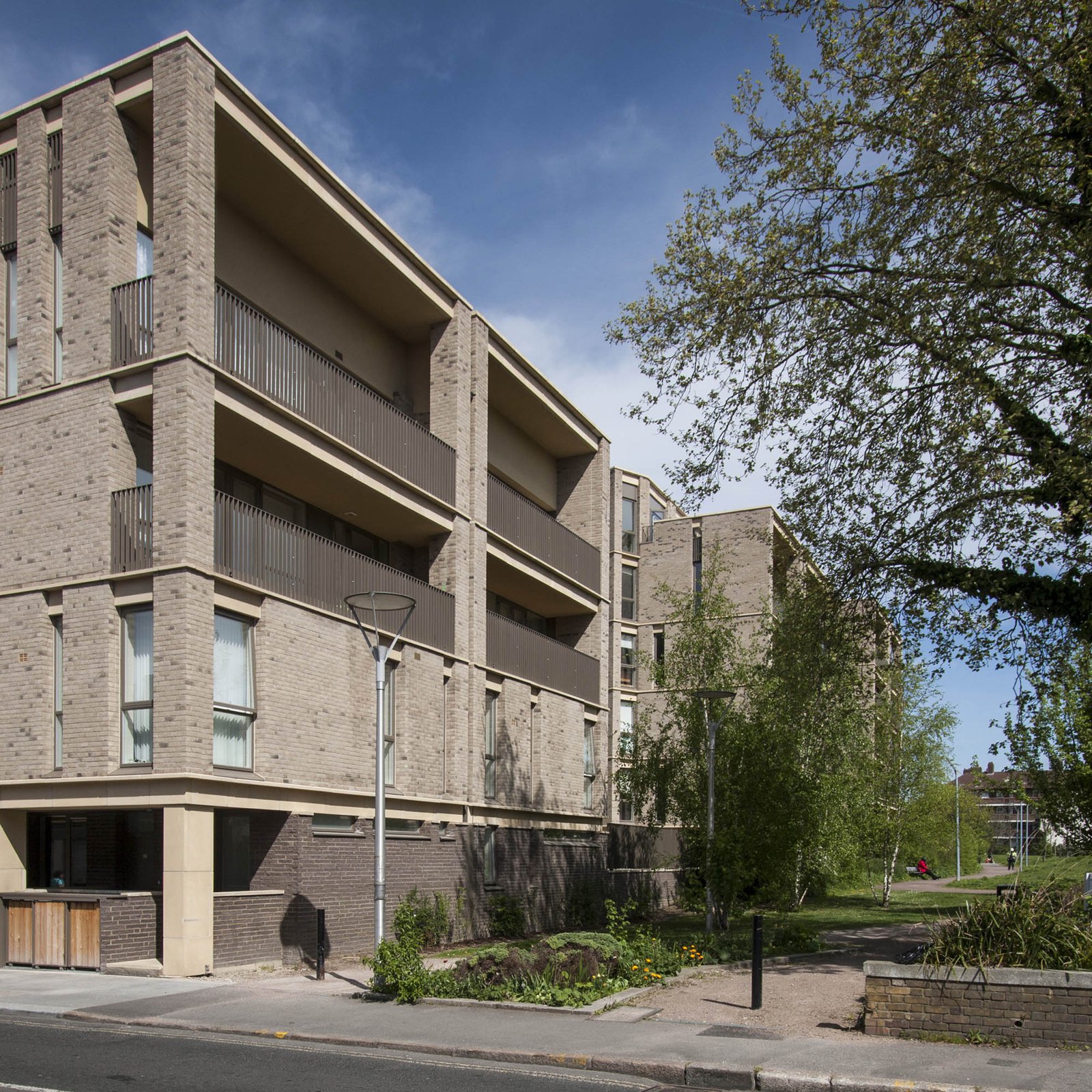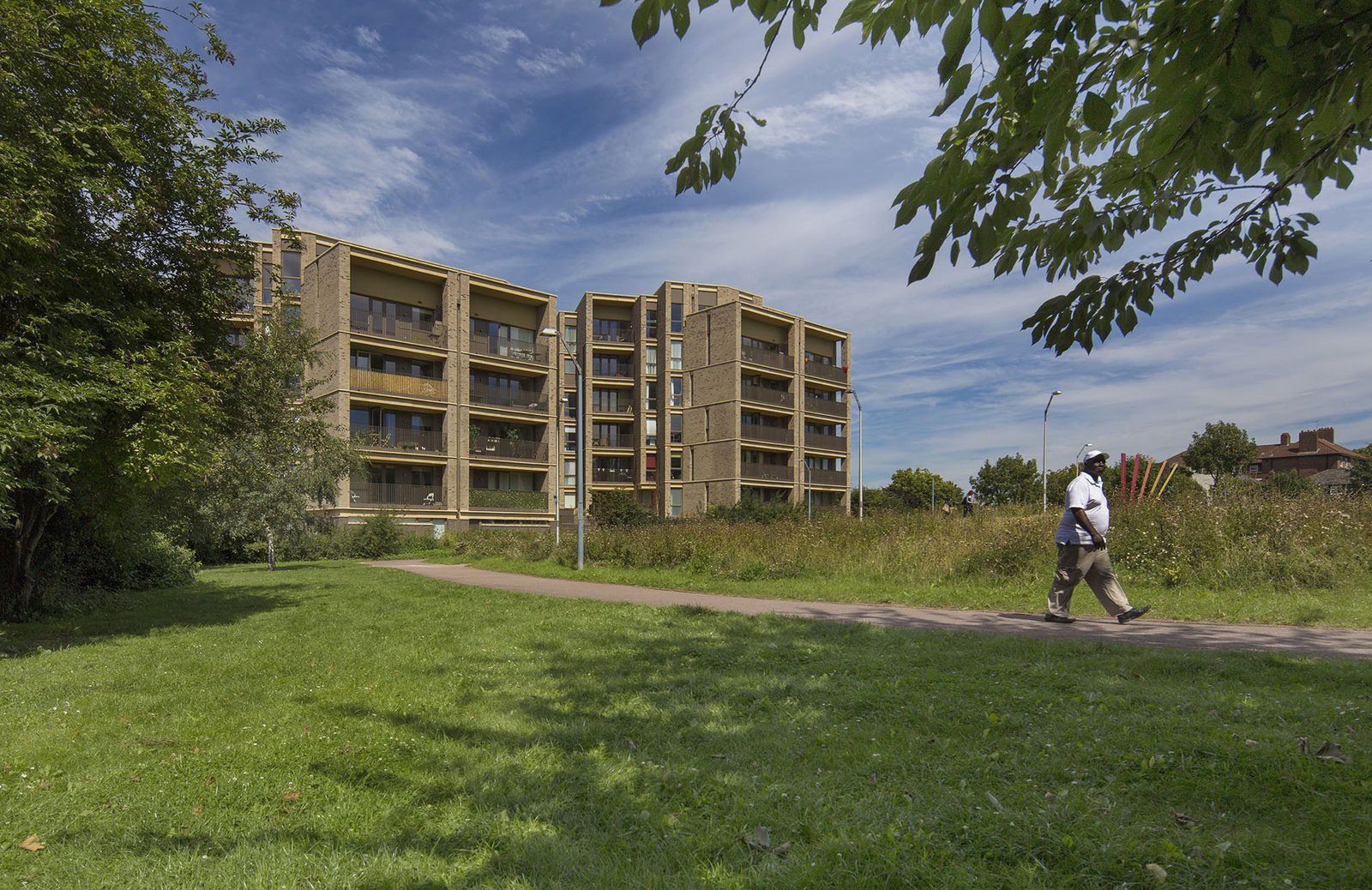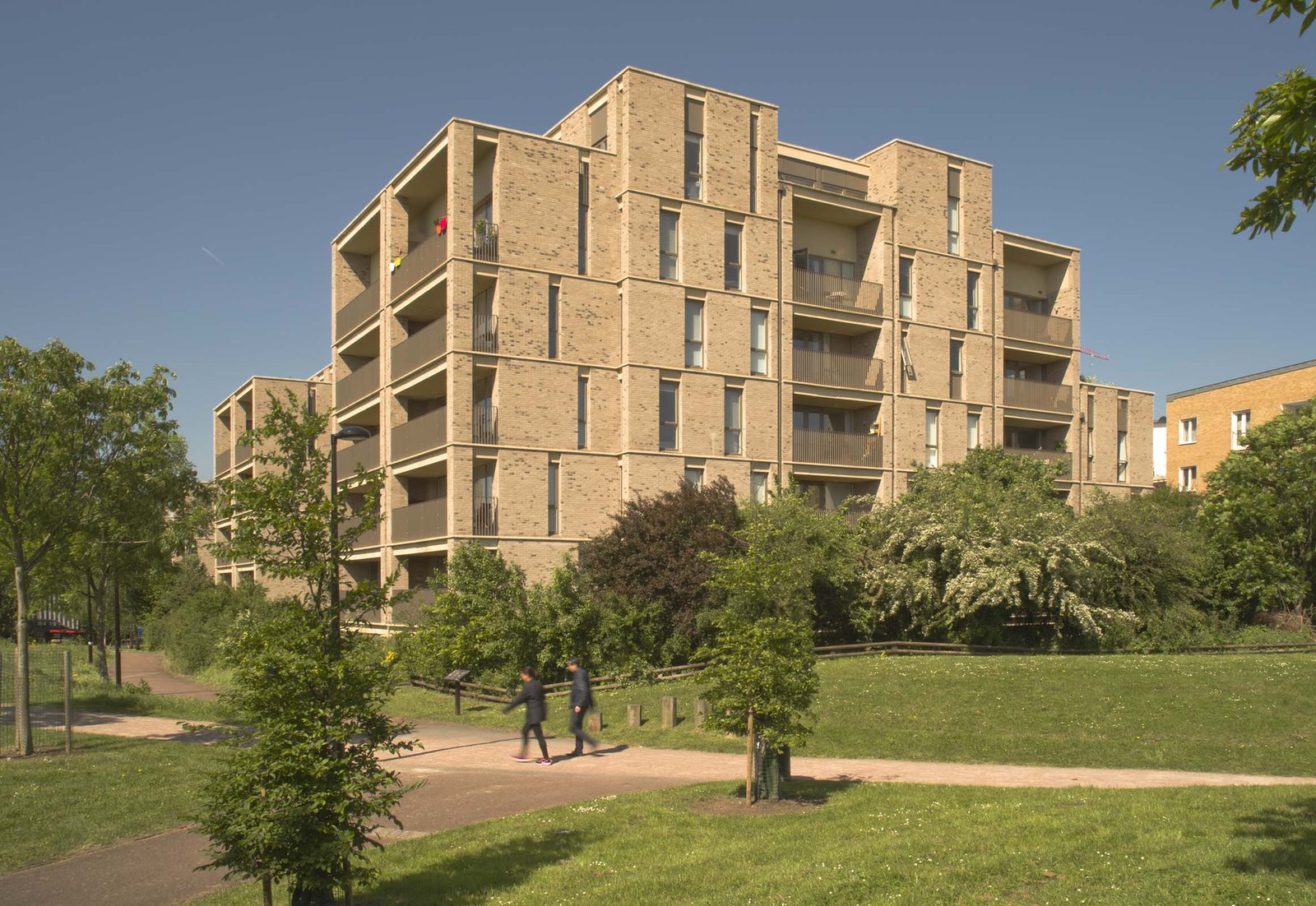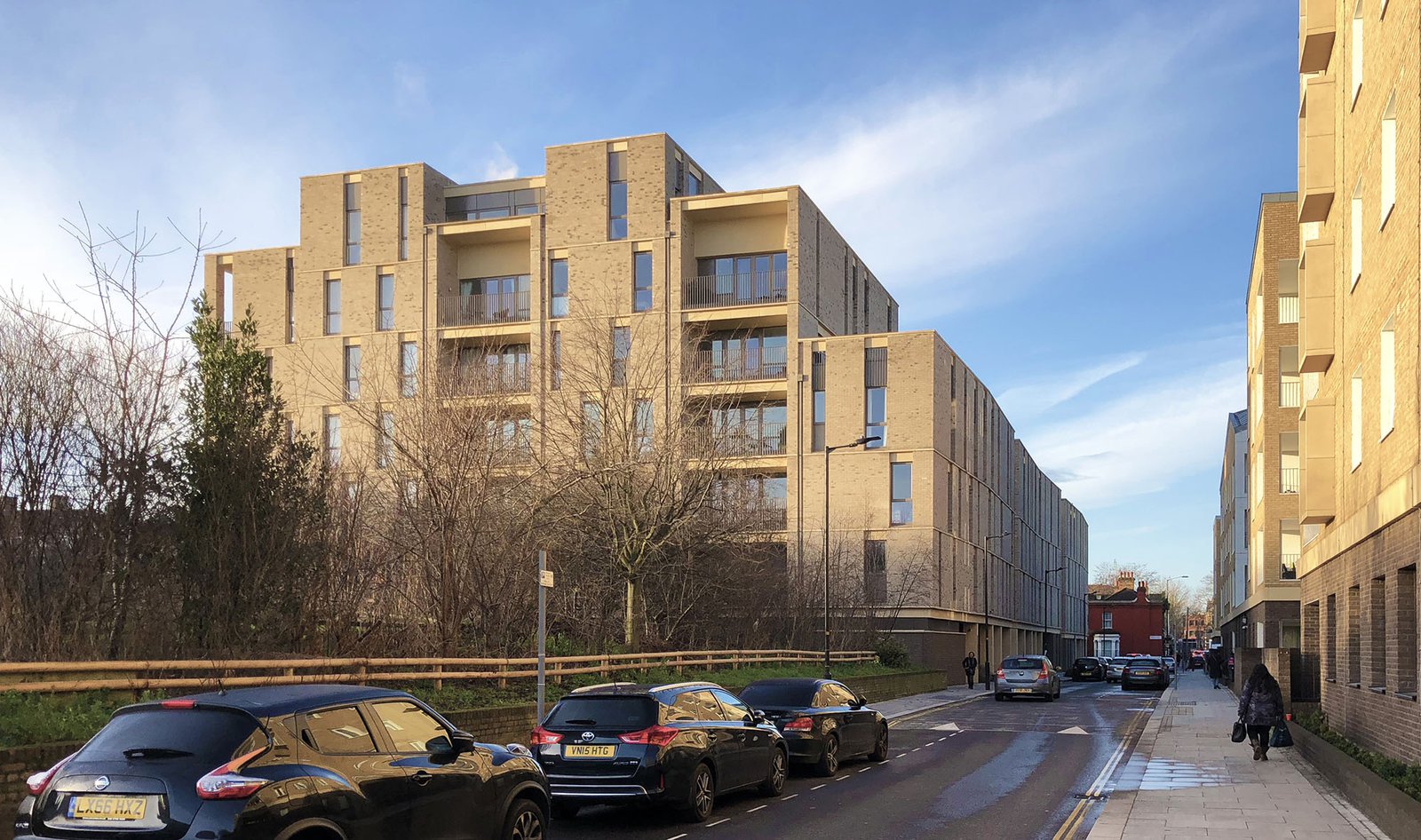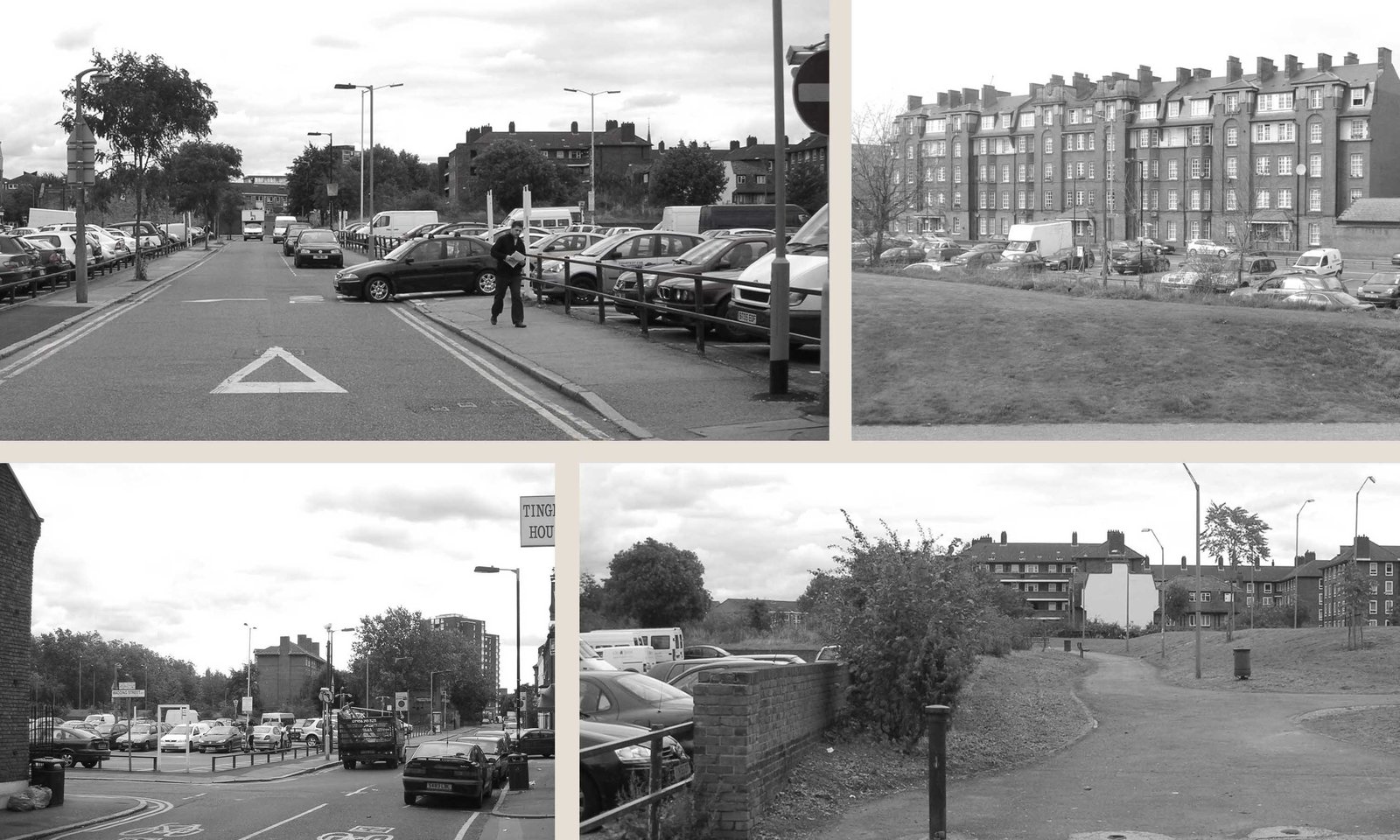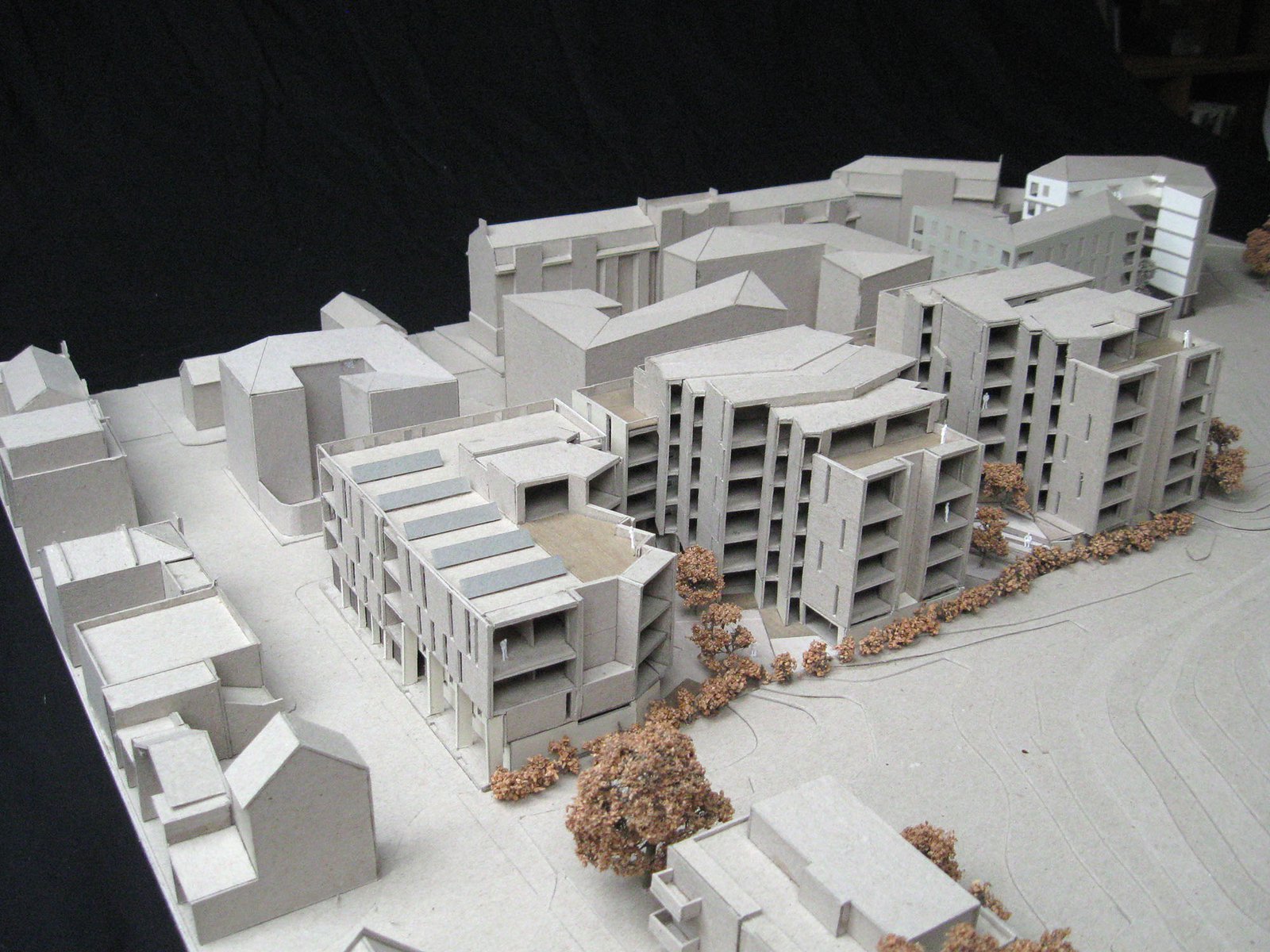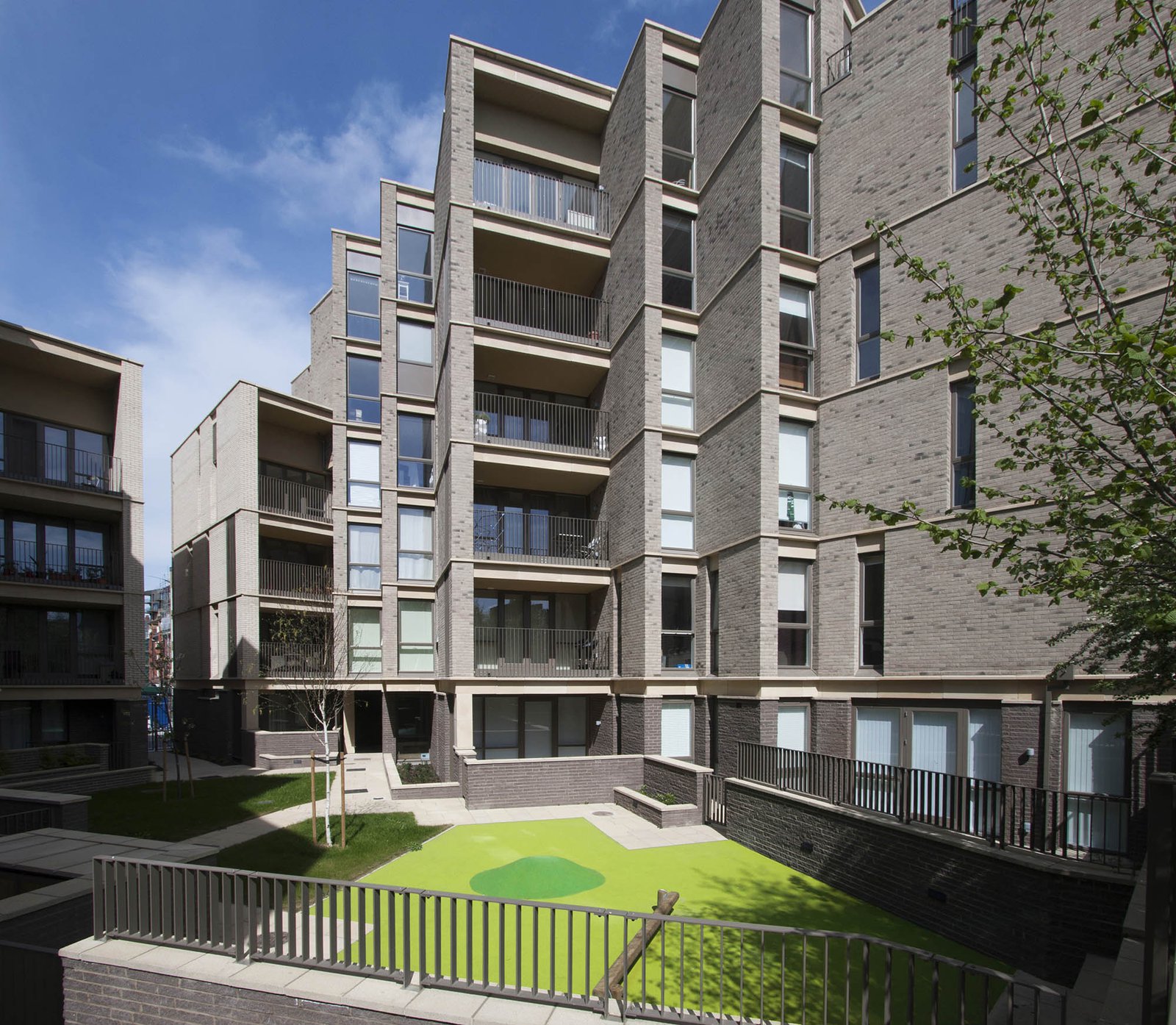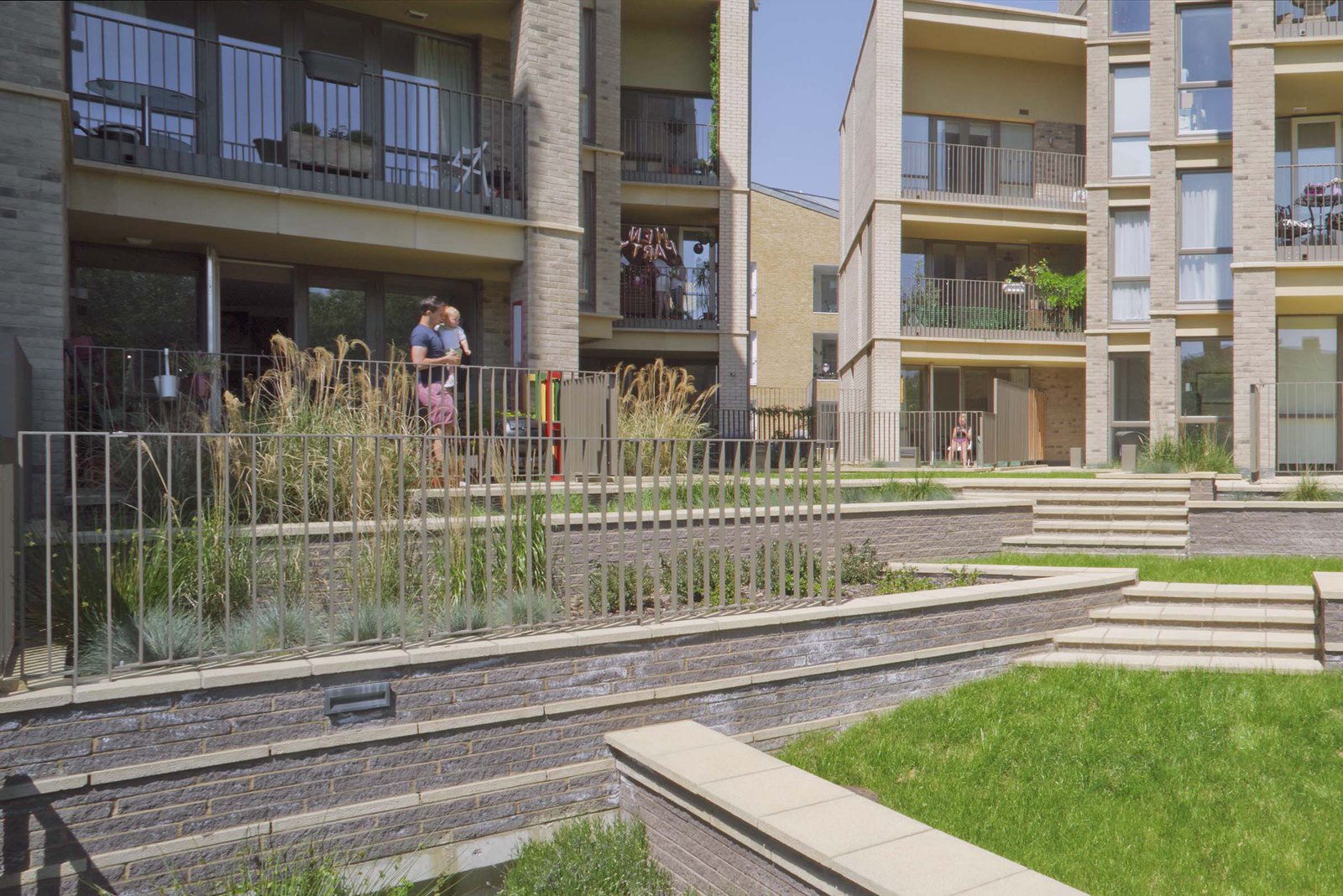stead streetLocation: Walworth, London
Client: Guinness Development Ltd and
Hills PartnershipStatus: Completed 2017
Budget: £14 million
Competition-winning council-led housing schemeThe Stead Street redevelopment is the last of Southwark Council’s Elephant & Castle Early Housing Sites identified to re-house residents of the now-demolished Heygate Estate.
"What a pleasure it is to live a mile from Westminster in this thoughtfully designed, elegant, oasis. Set on a former car park, this development rises up like a post modern castle from nursery row park."Resident in Winch House
Two sites were developed in tandemWe were selected to develop proposals for the southern portion of the site fronting the park with Haworth Tompkins Architects responsible for the northern site. Our site contains 77 new homes located in three buildings arranged around two courtyards. The homes include maisonettes at street level with a high proportion of family units also located at roof level with extensive private terraces.
Massing driven by demands of contextThe buildings vary in height from four storeys along Brandon Street and Stead Street, limiting their impact on the immediate neighbours, before stepping up to seven storeys onto the park. The set-backs at upper levels create large rooftop gardens for the largest of family units.
Bespoke plan form orientates homes towards parkThrough lengthy design evolution, a bespoke plan form was generated so as to afford almost 100% of homes to be dual aspect and orientated towards the adjacent park. Living spaces open out towards the south onto generous balconies, rooftop terraces or the communal courtyards.
Materiality responds to contextThe elevations are composed principally of brickwork with a split faced reconstituted stone plinth and areas of precast concrete detailing around balconies, windows and defining floor slabs. The facades along Stead Street are gently cranked on plan to soften their urban form and respond to the undulating roof line on the Haworth Tompkins buildings on the other side of the street.
Low-tech fabric-first sustainabilityThe development incorporates a passive-approach to technology, including almost 100% dual aspect homes, a central gas fired CHP plant with thermal stores, roof-top PV panels, extensive green roofs and a heavily insulated external envelope.
PhotographyPanter Hudspith Architects and Enrique Verdugo
